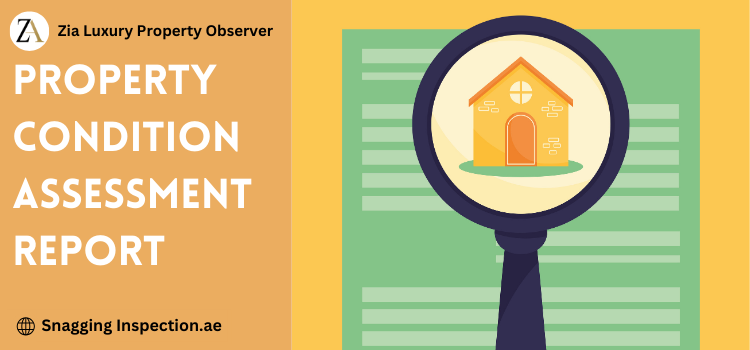Investing in real estate, whether as a buyer, seller, or manager, requires thorough due diligence. One of the most critical components of this process is obtaining a Property Condition Assessment (PCA) report. This comprehensive document provides a detailed evaluation of a property’s current state, identifying potential risks, repair costs, and maintenance needs. In this guide, we will explore every aspect of a PCA report, from its importance to its components, and how it benefits property owners and real estate investors.
What is a Property Condition Assessment Report?
A Property Condition Assessment (PCA) report is a detailed analysis of a property’s physical condition. Conducted by a qualified building inspector, this report covers various aspects of the property, including structural integrity, building systems, and safety features. The primary goal of a PCA report is to identify any existing or potential issues that could affect the property’s value or safety.
Importance of a Property Condition Assessment Report
For Property Owners and Real Estate Investors, a PCA report is invaluable. It provides a clear understanding of the property’s condition, helping in decision-making processes such as purchasing, selling, or maintaining a property. Here’s why a PCA report is crucial:
- Risk Mitigation: By identifying potential safety hazards and fire safety violations, a PCA report helps mitigate risks associated with property ownership.
- Cost Estimation: The report outlines necessary repairs and maintenance needs, giving a clear picture of future expenses.
- Informed Decision-Making: Both property owners and real estate investors can make better decisions regarding investments, sales, and management based on the detailed insights provided by the PCA report.
Why Do You Need a Property Condition Assessment Checklist?
A Property Condition Assessment checklist is essential for ensuring a thorough and systematic evaluation of the property. This checklist helps building inspectors cover all critical areas, ensuring that no aspect of the property is overlooked. A comprehensive checklist can save time and money by identifying potential issues early, allowing for timely repairs and maintenance.
Components of a Property Condition Assessment Report
A thorough PCA report encompasses several key components:
- Building Systems: This section evaluates the condition of major systems such as HVAC, plumbing, and electrical. Proper functioning of these systems is crucial for the property’s operational efficiency.
- Structural Integrity: An assessment of the property’s foundation, walls, and roof to ensure they are free from significant defects or damage.
- Safety and Accessibility: This includes checking for compliance with safety standards and accessibility requirements, such as DDA (Dubai Development Authority ) guidelines.
- Documentation: The report compiles all relevant documentation, including previous inspection reports, maintenance records, and repair histories.
- Inspection Checklist: A detailed checklist used during the inspection process to ensure all areas of the property are thoroughly examined.
What Should a Property Condition Assessment Checklist Include?
A Property Condition Assessment checklist should include all critical aspects of the property to ensure a thorough evaluation. Key elements of the checklist include:
Exterior Inspection: Assessing the condition of the building’s exterior, including walls, windows, doors, and drainage systems.
Interior Inspection: Evaluating the condition of interior spaces, including flooring, ceilings, and finishes.
Mechanical Systems: Checking HVAC, plumbing, and electrical systems.
Safety Features: Ensuring the presence and functionality of safety features such as fire alarms and emergency exits.
Additional Areas That May Be Included
In addition to the primary components, a PCA report may include evaluations of additional areas depending on the property’s specific needs. These can include:
Landscaping and Grounds: Assessing the condition of landscaping, walkways, parking areas, and drainage systems.
Specialized Equipment: Evaluating the condition of any specialized equipment or systems unique to the property.
Environmental Concerns: Identifying potential environmental hazards, such as asbestos or lead paint.
Building Systems: HVAC, Plumbing, and Electrical
The condition of building systems is a critical aspect of the PCA report. Here’s a closer look at the major systems evaluated:
- HVAC Systems: Heating, ventilation, and air conditioning systems are inspected for efficiency, potential issues, and overall condition. Properly functioning HVAC systems are essential for maintaining a comfortable indoor environment and reducing energy costs.
- Plumbing: The inspection includes an evaluation of the property’s plumbing systems, checking for leaks, corrosion, and overall functionality. Effective plumbing is crucial for the property’s usability and safety.
- Electrical Systems: Electrical systems are assessed to ensure they meet current safety standards and are capable of handling the property’s power needs without posing a risk of electrical hazards.
Structural Integrity and Safety Hazards
Ensuring the structural integrity of a property is vital for its longevity and safety. The PCA report includes:
- Foundation and Walls: The building inspector examines the foundation and walls for cracks, settling, or other signs of structural issues.
- Roofing: The condition of the roof is evaluated for damage, leaks, or wear and tear that could lead to future problems.
- Safety Hazards: Any potential safety hazards, such as unstable structures or materials that pose a risk to occupants, are identified and documented.
Accessibility and Fire Safety Violations
Compliance with accessibility and fire safety standards is a crucial part of property management. The PCA report addresses:
- Accessibility: Ensuring the property meets accessibility requirements, including ADA compliance, to accommodate all individuals.
- Fire Safety: The inspection covers fire safety features such as fire exits, alarms, sprinklers, and potential fire safety violations. Maintaining proper fire safety measures is essential for protecting occupants and minimizing legal liabilities.
Documentation and Inspection Reports
A comprehensive PCA report includes all relevant documentation to provide a complete picture of the property’s condition:
- Previous Inspection Reports: Reviewing past inspection reports helps in understanding the property’s maintenance history and any recurring issues.
- Maintenance Records: These records provide insight into how well the property has been maintained over time.
- Repair Histories: Documentation of past repairs helps in identifying patterns and planning future maintenance needs.
How to Prepare for a Property Condition Assessment?
Preparing for a Property Condition Assessment involves several key steps to ensure a smooth and thorough evaluation:
1. Gather Documentation:
Collect all relevant documentation, including previous inspection reports, maintenance records, and repair histories. This information will help the building inspector understand the property’s history and any recurring issues.
2. Perform a Preliminary Inspection :
Conduct a preliminary inspection of the property to identify and address any obvious issues before the formal assessment. This can help streamline the process and reduce potential repair costs.
3. Coordinate with Tenants :
If the property is occupied, coordinate with tenants to ensure they are aware of the inspection and provide access to all areas of the property.
4. Clear Access Points :
Ensure that all areas of the property, including mechanical rooms, basements, and attics, are accessible to the building inspector.
Estimating Repair and Maintenance Costs through PCA report
One of the most critical aspects of the PCA report is estimating repair costs and future maintenance needs. This section helps property owners and real estate investors plan their budgets and make informed financial decisions. The report includes:
- Immediate Repairs: Identifying repairs that need immediate attention to prevent further damage or safety issues.
- Long-Term Maintenance: Outlining maintenance needs that should be addressed over time to ensure the property’s continued operation and value.
- Cost Estimation: Providing detailed cost estimates for identified repairs and maintenance tasks, helping in financial planning and budgeting.
PCA report benefits for real estate investors
- Investment Security: Detailed knowledge of the property’s condition helps in assessing the risks and potential returns on investment.
- Negotiation Leverage: Insights from the PCA report can be used to negotiate better purchase prices or terms.
- Future Planning: Understanding future maintenance and repair needs allows investors to plan for ongoing costs and budget accordingly.
Conclusion
A Property Condition Assessment report is a comprehensive document that offers invaluable insights into the condition of a property. It helps property owners and real estate investors make informed decisions, mitigate risks, and plan for future expenses. By covering all aspects of the property, from structural integrity and building systems to safety features and maintenance needs, a PCA report ensures that you have a clear and detailed understanding of the property you are dealing with. Whether you are buying, selling, or managing real estate property, investing in a thorough PCA report is a wise decision that can save you time, money, and potential headaches in the long run.

